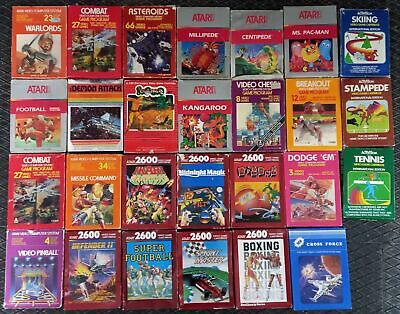
On a bustling Monday afternoon, it’s easy to take for granted the seamless digital world we inhabit. We navigate our lives with supercomputers in our pockets, access the sum of human knowledge with a voice command, and connect with people across the globe in an instant. The intricate structure of our modern society was not created overnight, though. It was forged in a series of seismic moments—pivotal events that felt like the future arriving in real-time, sending shockwaves through society and defining the trajectory of the 21st century.This isn’t just a list of old products or forgotten companies; it is a series of tech industry flashbacks to the watershed moments that fundamentally altered the course of technology, business, and human behavior.

The Revolution in Access: From Mainframes to the Mainstream
These are the events whose echoes still shape our world today, from the global stage to the local realities of how we live, work, and connect right here in. Let’s take a look back at the keynotes, the product launches, and the market crashes that created the era we now live in.
1977: The First Shot in the Personal Computer Revolution
The Moment: In an era dominated by colossal, room-sized mainframe computers accessible only to corporations and universities, a small upstart company named Apple Computer, founded by two Steves in a garage, launched the Apple II.
The Flashback: Before 1977, the very concept of a “personal” computer seemed like science fiction. Computers were intimidating beasts, operated by specialists in lab coats. The Apple II, however, was different. It was one of the first computers designed as a complete, ready-to-use appliance for the mass market.
It came with a keyboard, could be hooked up to a standard television set, and, most importantly, it displayed in color. For the first time, a computer was presented as a tool for individuals—for students, small business owners, and families.
Its Significance: The commercial triumph of the Apple II served as the catalyst for the revolution in personal computing. It was more than just a piece of hardware; it was the tangible manifestation of the idea that computing power could be democratized. It created the first generation of home computer enthusiasts and bedroom coders.
Its success fueled the software industry, most notably with the release of VisiCalc, the first-ever spreadsheet program, which turned the Apple II from a hobbyist’s toy into an indispensable business tool. The ripples of this moment would eventually reach India, leading to the PC boom of the 1990s and setting the stage for the country’s rise as a global IT powerhouse. The Apple II did more than simply introduce a new device; it served as the catalyst for an entirely new industry.

1995: The Day the World Logged On
The Moment: Microsoft launches Windows 95, the first mainstream operating system with built-in internet support, just as user-friendly web browsers like Netscape Navigator are making the World Wide Web accessible to non-academics for the first time.
The Flashback: For those who remember it, the sound is unforgettable: a cacophony of beeps, screeches, and static as a dial-up modem connected to the internet. The year 1995 was the inflection point where the internet transformed from a niche network for universities and the government into a global public phenomenon.
The launch of Windows 95 was a masterclass in marketing, with lines forming outside stores for a piece of software. Its user-friendly graphical interface and integrated internet capabilities meant that, for the first time, getting online was something an ordinary person could do.
The Impact: This moment triggered a cultural and economic explosion. It was the true beginning of the digital age for the masses. Companies like America Online (AOL) mailed out millions of free trial CDs, bringing millions of households online. This sudden influx of users created the foundation for the Dot-Com Boom.
across India, this was the era when the first cyber cafes opened, offering a generation their first glimpse into a vast, interconnected world of information and communication through services like Yahoo and Hotmail. This is one of the most critical tech industry flashbacks because it represents the democratization of information itself.
2000-2001: The Dot-Com Bubble Bursts
The Moment: After years of frenzied investment and sky-high valuations for any company with a “.com” in its name, the NASDAQ stock index peaks in March 2000 and then begins a catastrophic financial decline where the market’s total valuation plummeted by trillions of dollars in the span of the next year.
The Flashback: The late 1990s were a period of “irrational exuberance.” The belief that the internet would change everything led to a gold rush mentality. Startups with no clear business model or path to profitability were receiving billions in venture capital.
Companies like Pets.com, which famously sold pet supplies online, and Webvan, an ambitious grocery delivery service, became symbols of this excess. Because of the sheer volume of commercials from new and unproven online startups, the 2000 Super Bowl became known as the “Dot-Com Super Bowl”.
The Impact: The crash was a brutal but necessary reality check. It exposed the folly of hype without a solid business foundation. Hundreds of dot-com companies went bankrupt, and the tech industry entered a period of deep skepticism.
However, the crash also had a cleansing effect. The companies that survived, like Amazon and Google, were forced to become leaner, more innovative, and focused on genuine profitability. This moment taught the industry a painful lesson about the difference between a trend and a sustainable business, a lesson that still echoes in the venture capital world of 2025.
2001: “1,000 Songs in Your Pocket”
The Moment: On October 23, 2001, Apple’s Steve Jobs stood on a stage and unveiled a small, white device called the iPod.
The Flashback: The world of digital music before the iPod was a clunky, confusing mess. MP3 players existed, but they were often difficult to use, had limited capacity, and came from obscure tech companies. Most people still carried portable CD players.
The iPod’s brilliance was not in its technology alone, but in its simplicity and its clear, powerful marketing message: “1,000 songs in your pocket.” Working in tandem with the iTunes application, the device established a perfectly integrated environment for purchasing, organizing, and playing digital audio.
The Impact: The iPod didn’t just kill the CD player; it completely upended the music industry. It popularized the concept of buying individual songs over full albums and set the stage for the streaming revolution that would follow. For Apple, it was a company-defining product that transformed it from a niche computer maker into a global consumer electronics giant. The iconic white earbuds became a status symbol, and the iPod’s user-centric design philosophy—making the complex simple—became the playbook Apple would use for its most significant product yet.
2008: The App Store Opens for Business
The Moment: A year after launching the revolutionary iPhone, Apple opens the App Store, allowing third-party developers from anywhere in the world to create and sell their own software for the device.
The Flashback: The original iPhone, launched in 2007, was a remarkable device, but it was a closed system. The apps on the phone were the ones Apple put there. The decision to open it up to outside developers was initially debated within Apple, but it proved to be one of the most consequential business decisions of the 21st century. The App Store launched with just 500 apps.
The Impact: This single moment created the entire mobile app economy as we know it today. It transformed the smartphone from a simple communication device with a few extra features into a versatile, powerful computing platform.
It unleashed a wave of innovation, creating entirely new industries—from ride-sharing (Uber) and social media (Instagram) to mobile gaming and food delivery—and generating billions of dollars and millions of jobs worldwide. It established the platform-based business model that now dominates the tech landscape. This is one of the most important tech industry flashbacks as it marks the moment the smartphone truly became “smart.”
Conclusion: The Echoes of the Past in Our Future
Looking back at these pivotal moments from our vantage point in 2025 provides a powerful lens through which to view our own era. The common thread that runs through each of these events is a fundamental shift—from centralized to personal technology, from complexity to user-centric design, and from niche tools to mass-market phenomena. These flashbacks are not just trivia; they are the stories of how our modern world was built, one revolutionary idea at a time. As we stand on the precipice of new potential shifts driven by AI and spatial computing, these tech industry flashbacks serve as a crucial reminder that the future is often shaped by a handful of bold, game-changing moments.






